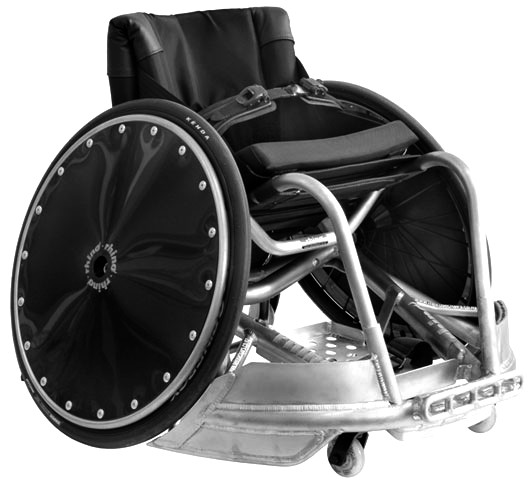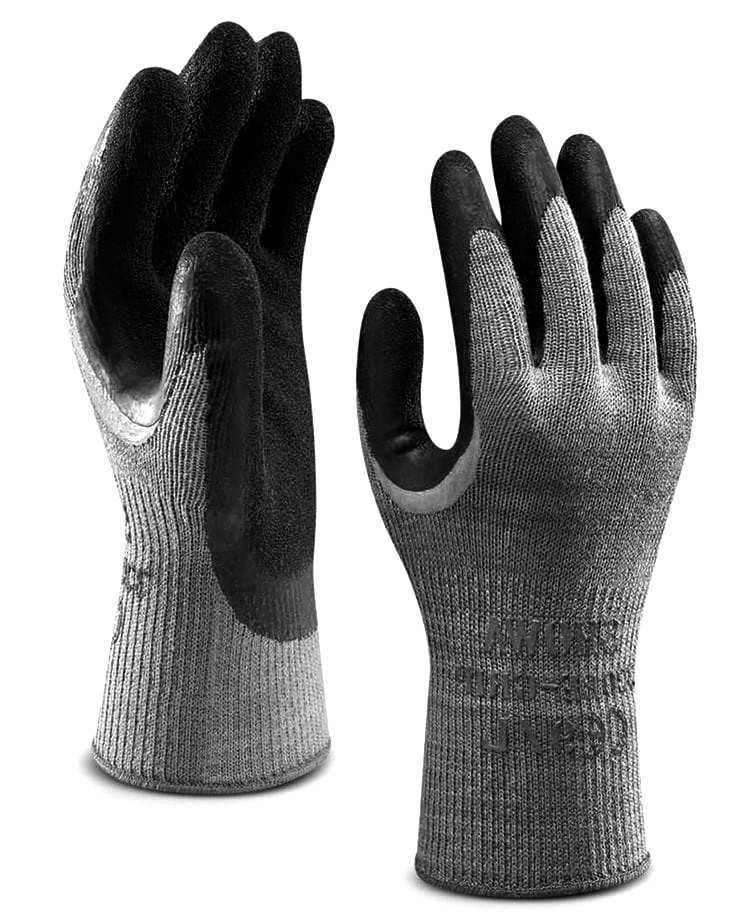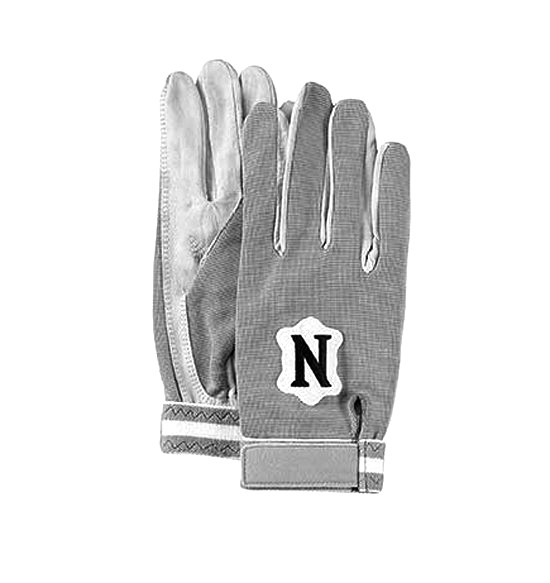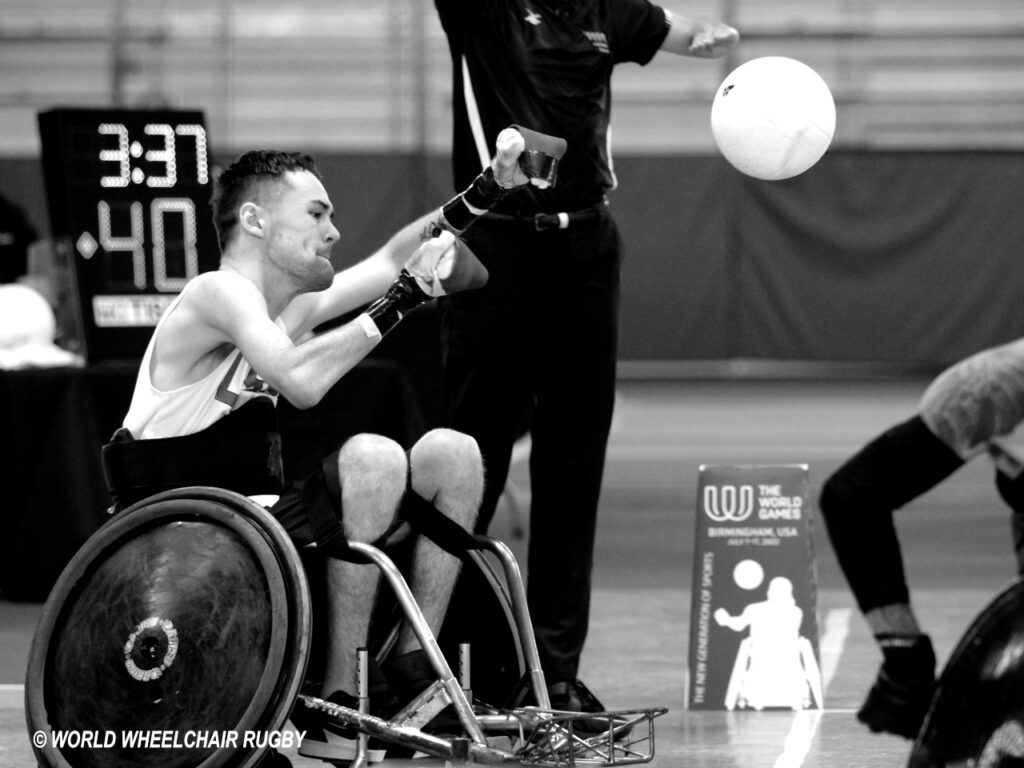Equipment
Before playing Wheelchair Rugby, there is a series of checks to be undertaken to ensure that all equipment is Wheelchair Rugby Ready. Players can help themselves by ensuring they use appropriate equipment.
Athletes compete in manual wheelchairs that are specially designed for Wheelchair Rugby. The rules of the sport include detailed specifications for the wheelchairs to ensure safety and fairness; in international competition, all wheelchairs must meet these requirements to be considered legal for play.
When first starting out, any manual wheelchair may be used while learning the sport, although the game is much easier when played in a Rugby chair. Many players begin using wheelchairs adapted from wheelchair basketball, and switch to Rugby chairs when their skills have improved and they have committed to the sport.
There are two types of Wheelchair Rugby chairs: offensive and defensive chairs.
Offensive Wheelchairs
Offensive chairs are set up for speed and mobility and contain a front bumper and wings to prevent other wheelchairs from hooking it. These chairs are used by players with more function (2.0, 2.5, 3.0, 3.5)

Defensive Wheelchairs
Defensive wheelchairs, like the one pictured on the left contain bumpers set up to hook and hold other players. These wheelchairs are most often used by players with less function (0.5, 1.0, 1.5).

Gloves
Most athletes wear gloves while playing Wheelchair Rugby, and consider them as a vital part of their personal equipment. They are worn for several reasons, but most often because they help protect the hands and skin during play.
Many different types of gloves are available to choose from. When selecting gloves one should look for something durable that will hold up to the rigors of the sport. Many athletes prefer using rubber coated cotton gloves such as shown below, because they are inexpensive and provide considerable grip to the player. Using tape to secure gloves to your wrist is a common practice and is highly recommended.
Some additional benefits of wearing gloves are:
- They often provide additional grip when pushing the chair, and aid with starting and stopping
- They can help compensate for the loss of hand and finger function associated with a disability
- They make catching, throwing and handling the ball easier during practice and competition

Many different types of gloves are available to choose from. When selecting gloves one should look for something durable that will hold up to the rigors of the sport. Many athletes prefer using rubber coated cotton gloves such as shown below, because they are inexpensive and provide considerable grip to the player. Using tape to secure gloves to your wrist is a common practice and is highly recommended.

Strapping
Strapping is an important part of every Wheelchair Rugby athlete’s preparation when getting ready to practice or play. Being properly strapped into your Rugby chair will provide added stability and improve all aspects of your performance on the court.
When strapped correctly, a Rugby chair will respond as if it is a natural part of the athlete’s body, in essence becoming one. The three primary areas where strapping is used are:
- The waist – to compensate for the lack of or a weakness of trunk muscles
- The thighs – to keep the legs apart and from shifting side to side during play
- The feet – to keep the feet firmly in place in a comfortable position on the foot plate
Many different types of strapping are available, and can be made from leather, neoprene, nylon, rubber or other materials. Because strapping techniques are so varied, it is best to talk with your coach or other athletes to help determine what system may be best for your needs.

Additional Equipment
A Wheelchair Rugby Ready athlete is responsible, and will always bring everything they may need when attending a practice or competition. Most players use a gym bag or backpack for this, and will carry an assortment of items that they will use or need. Some of the common things a player may carry with them are:
- A water bottle and spray bottle
- Several rolls of athletic tape
- Extra gloves and strapping
- An extra practice jersey and/or T-shirt
- Four to eight extra inner-tubes for the Rugby chair
- Spare parts such as extra spokes, bearings, axles, etc
- A small toolkit with wrenches, pliers, hex-wrenches, etc
- Personal items such as gum, catheters, medication, towel, hand cleaner, etc
Every athlete should also have one or two spare wheels for their Rugby chair that are always ready to go. This means that the tires are properly inflated with air and without leaks, and they are brought to every practice or competition by the player. Your team may have an equipment manager, but it is the athlete who must always be Wheelchair Rugby Ready.

